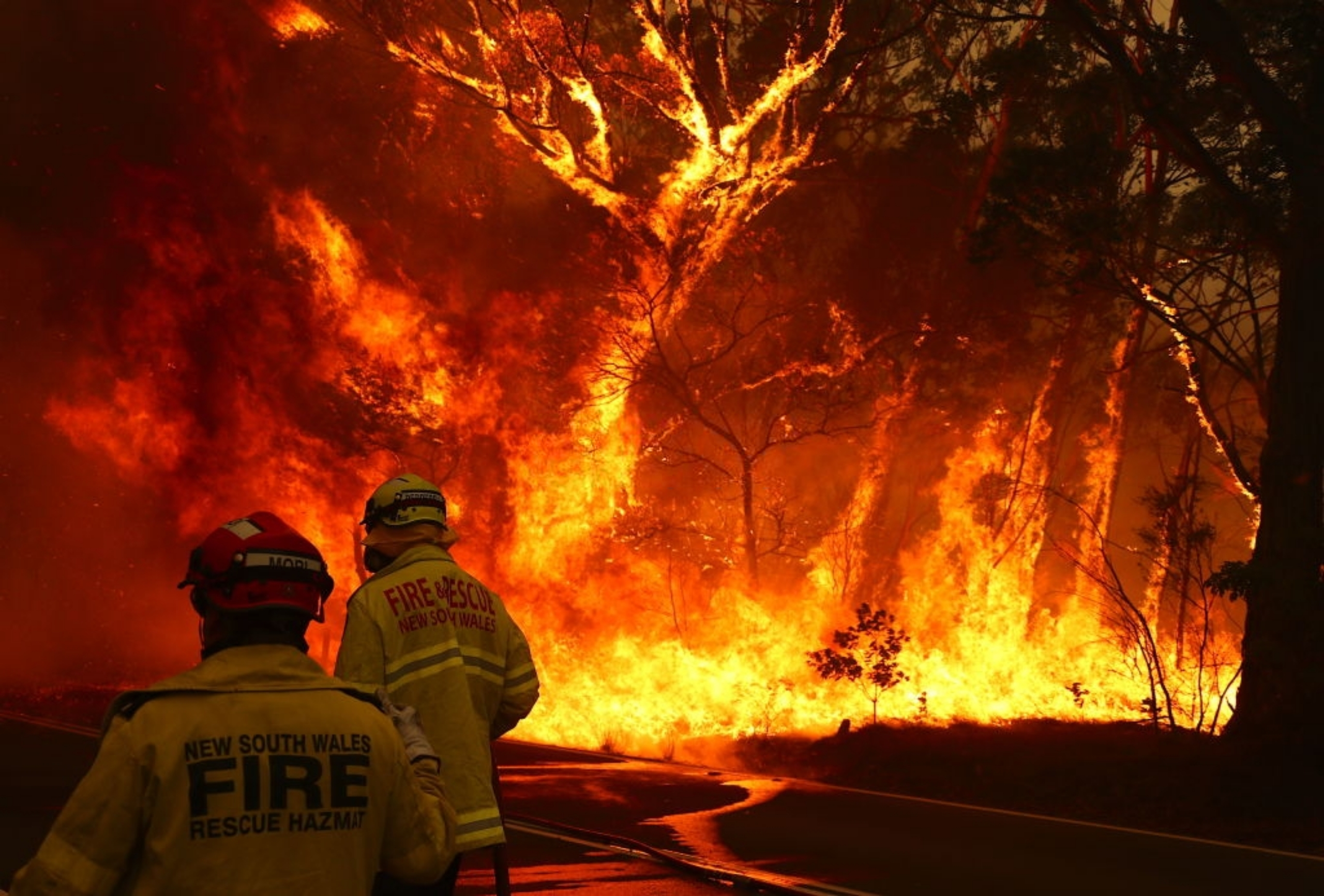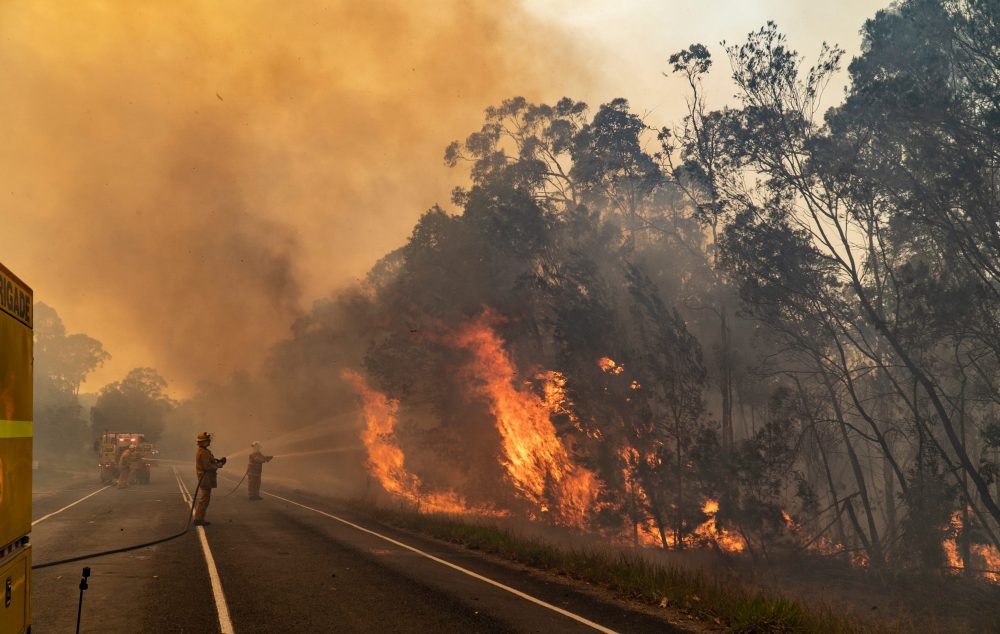Revealing the Risks: Why Every Homeowner Requirements a Bushfire Risk Assessment
Wiki Article
Best Practices in Bushfire Administration for Comprehensive Fire Defense
In the realm of bushfire monitoring, the mission for thorough fire protection requires a precise strategy that incorporates various important elements. From rigorous danger evaluation and critical preparation to the implementation of efficient plants monitoring strategies, the spectrum of finest techniques is elaborate and huge. Area involvement and education play essential duties in cultivating strength and preparedness, while early discovery and caution systems offer as crucial safeguards. Furthermore, the seamless sychronisation of emergency situation feedback and discharge strategies is crucial for guaranteeing the security and well-being of individuals in the face of intensifying bushfire risks. As we navigate through the subtleties of these ideal techniques, an expedition right into the elaborate web of methodologies and strategies waits for, assuring a much deeper understanding of the diverse landscape of bushfire management for comprehensive fire defense.Risk Analysis and Planning
In bushfire monitoring for fire protection, the first step includes performing a thorough danger analysis and developing a detailed strategy to reduce prospective hazards. Danger analysis is a crucial procedure that entails identifying, examining, and reviewing potential dangers that might bring about a bushfire. This assessment thinks about numerous factors such as climate condition, topography, gas lots, and human activities in the area. By comprehending these threats, fire defense authorities can prioritize areas that are most vulnerable to bushfires and designate sources efficiently.By having a well-defined plan in area, emergency situation services can act swiftly and successfully to shield lives, property, and the setting throughout a bushfire outbreak. Effective danger assessment and planning are basic parts of bushfire administration for ensuring comprehensive fire security.
Greenery Monitoring Methods
After carrying out a thorough threat assessment and establishing a comprehensive prepare for bushfire management, the emphasis shifts to applying reliable greenery management methods. Plant life management plays a crucial duty in lowering the strength and spread of bushfires. One vital technique is creating defensible area around homes by removing combustible plant life and maintaining a safe distance between greenery and structures. This assists to produce a buffer zone that can slow down the development of a fire and supply a more secure setting for firemans to safeguard properties.Along with creating defensible space, prescribed burning is an additional vital plant life monitoring approach. Suggested burns entail intentionally setting fires under regulated conditions to reduce the accumulation of fuel, lower the chance of high-intensity wildfires, and advertise ecological community wellness. By purposefully melting areas with excess greenery, fuel levels are lowered, making it harder for fires to spread out quickly and uncontrollably.

Community Involvement and Education And Learning
Reliable neighborhood interaction and education are important components in building a positive and durable method to bushfire management. By entailing area members in the planning and implementation of bushfire monitoring methods, stakeholders end up being active individuals in securing their neighborhoods and homes. Area involvement promotes a sense of common obligation and empowers homeowners to take possession of their security.Education plays a crucial duty in gearing up individuals with the expertise and skills required to alleviate bushfire dangers effectively. Giving academic sources on fire avoidance, emptying treatments, and the value of early discovery can considerably boost neighborhood readiness. Furthermore, educating citizens on the local bushfire atmosphere, including fire habits and threat elements, allows them to make educated choices during risky situations.
Via continuous engagement and education campaigns, communities can establish a cumulative understanding of bushfire threats and job collaboratively to decrease the impact of wildfires. By promoting a society of preparedness and resilience, neighborhood members can enhance their ability to react effectively to bushfire emergency situations and protect both lives and residential property.

Early Discovery and Caution Equipments
Neighborhood involvement and education and learning function as foundational pillars in establishing aggressive bushfire monitoring techniques, preparing for the implementation of durable early discovery and warning systems. Early detection and caution systems are vital components in alleviating the impact of bushfires on areas and the environment. These systems incorporate a variety of modern technologies and techniques focused on identifying and notifying authorities and homeowners to potential fire break outs swiftly and effectively.One crucial element of early discovery systems is the use of sophisticated surveillance technologies such as satellite imagery, drones, and weather condition terminals to discover indicators of possible fire ignition. These technologies supply real-time information that can be analyzed to identify fire-prone locations and cause early warnings. Furthermore, the assimilation of community-based surveillance networks and automated alert systems can improve the efficiency of very early discovery initiatives by involving locals in reporting prospective fire threats and receiving timely warnings.
Reliable very early discovery and warning systems rely upon a multi-faceted method that integrates technical technology, area participation, and speedy emergency situation reaction procedures to make certain the prompt and coordinated management of bushfire incidents. By buying these systems and fostering collaboration between stakeholders, neighborhoods can improve their durability to bushfires and reduce the connected dangers.
Emergency Response and Evacuation Strategies
A well-coordinated and thorough emergency situation reaction and evacuation strategy is necessary for successfully protecting lives and residential or commercial property during bushfire cases. These strategies ought to be meticulously crafted, considering elements such as the topography of the area, the thickness of greenery, and the possible rate and direction of the fire's spread.One critical element of an emergency response strategy is the establishment of clear interaction channels to share timely and exact information to citizens and emergency -responders. This can consist of using alarms, mobile notifies, social media, and neighborhood conferences to guarantee that every person is informed and understands what activities to take.
Emptying courses must be pre-identified and regularly preserved to guarantee they come throughout emergency situations. Additionally, marked evacuation centers must be developed to offer sanctuary, clinical assistance, and support solutions to evacuees.
Normal drills and workouts are important to familiarize homeowners with evacuation procedures and check the performance of the plan. By constantly examining and updating emergency situation feedback and evacuation plans, neighborhoods can improve their preparedness and strength in the face of bushfire risks.
Final Thought
Finally, reliable bushfire management requires an extensive technique that consists of threat assessment, vegetation management, community interaction, early detection systems, and emergency reaction plans. By executing these finest methods, neighborhoods can much better secure themselves from the devastating impacts of bushfires - BAL Report. It is important to focus on positive procedures to minimize the threats presented by bushfires and make sure the security and wellness of individuals and communities at dangerAfter carrying out an extensive danger assessment and developing a comprehensive strategy for bushfire monitoring, the emphasis moves to carrying out effective vegetation monitoring approaches.Reliable area interaction and education are important components in developing a aggressive and durable method to bushfire management. By entailing community members in the preparation and application of bushfire management strategies, stakeholders come to be active individuals in securing their homes and communities.Area interaction and education offer as foundational pillars in developing proactive bushfire monitoring methods, laying the foundation for the application of robust very early discovery and warning systems.In verdict, effective bushfire monitoring requires a comprehensive strategy that consists of risk analysis, greenery administration, neighborhood interaction, very early discovery systems, and emergency reaction Bushfire Risk plans.
Report this wiki page